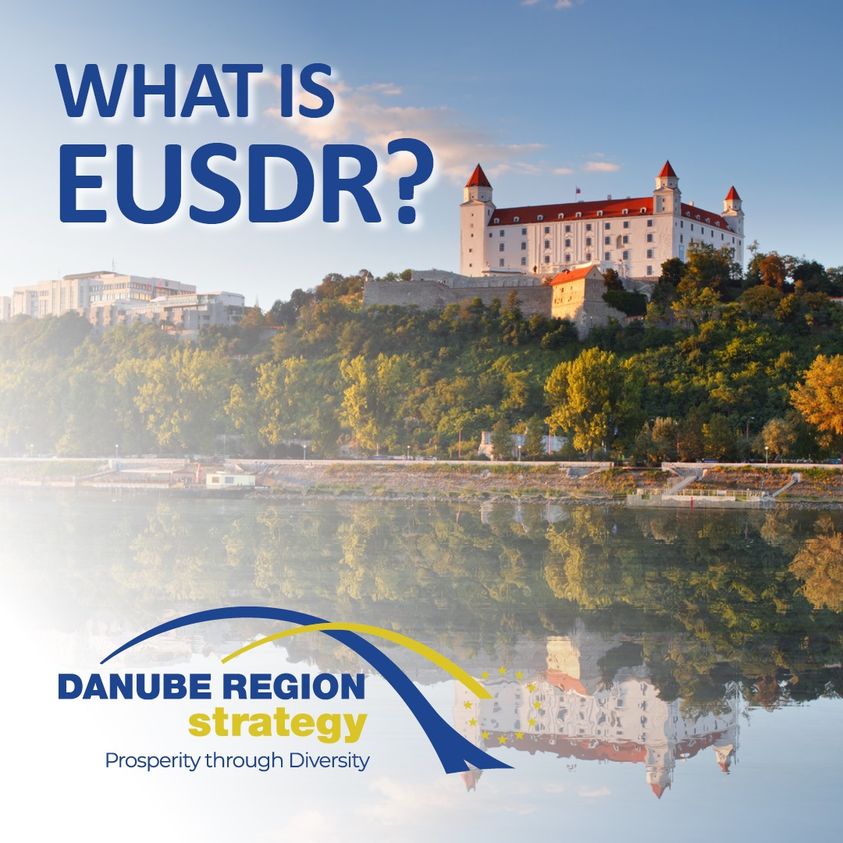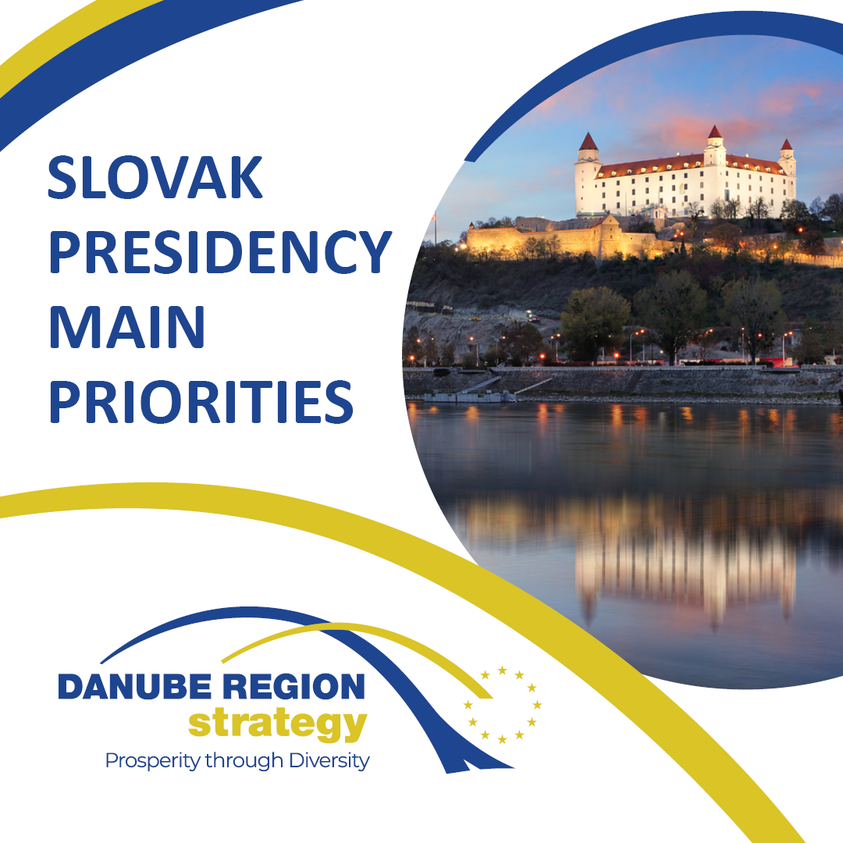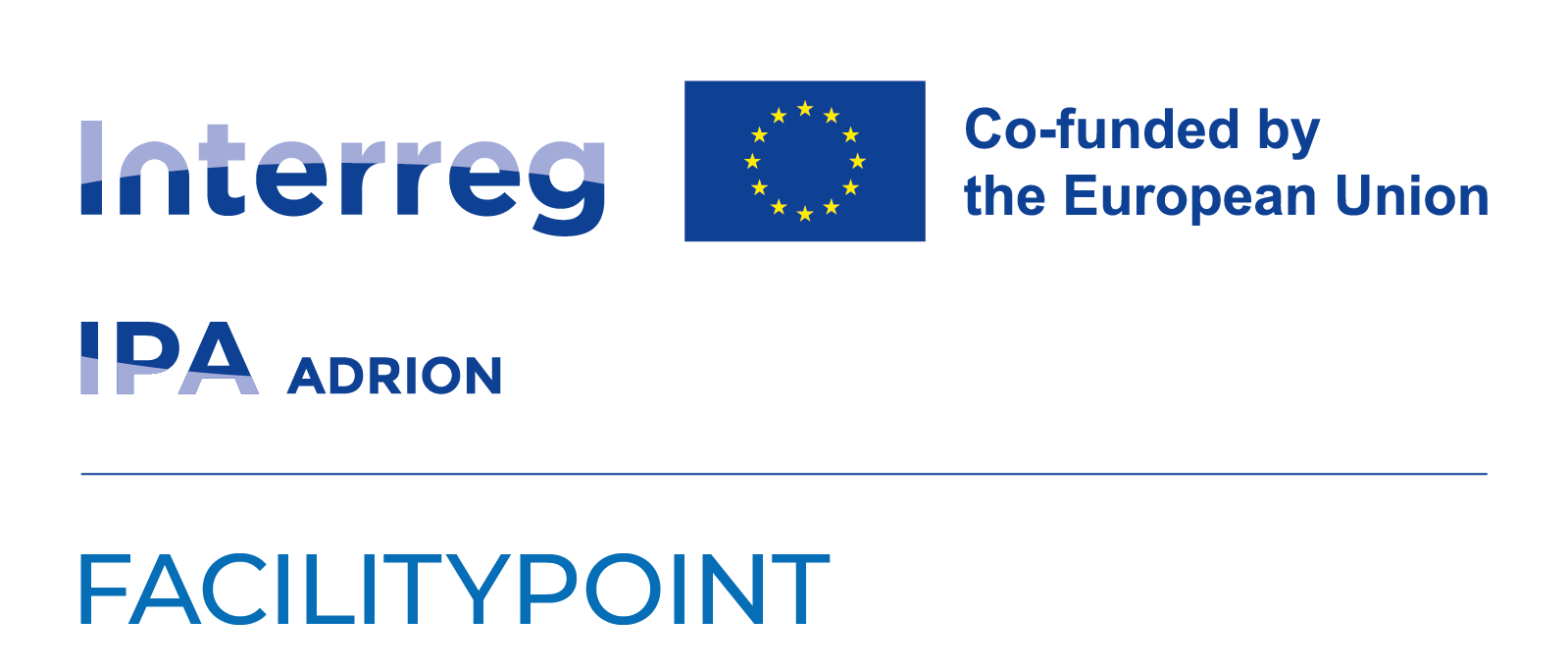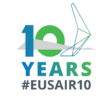10th Annual Forum of the EU Strategy for the Danube Region (EUSDR)
Hotel Bôrik, Bratislava, Slovakia and online | 26-27 October 2021
The 10th EUSDR Annual Forum, jointly organised by the Slovak Republic, the European Commission, the Danube Transnational Programme and with support of the Danube Strategy Point, will take place on 26-27 October 2021. The EUSDR Annual Forum will take place in a hybrid format. This means that the organizers and presenting participants (panellists and speakers) will physically meet in Bratislava, from where the entire annual forum will be streamed. Speakers will present their presentations and registered online participants will have the opportunity to interactively participate in discussions through one of the used online platforms.

DANUBE TRANSNATIONAL PROGRAMME ANNUAL EVENT
The aim of the DTP session is to present the continuum of cooperation in the Danube Region, starting from its early CADSES times, through the SEE, followed by the DTP2014-2020 and continuing with 2021-2027, with the focus on how it was adapting to ever changing reality and responding to regional needs (e.g. inclusion of back then pre-accession countries, a pioneer enterprise of shared management of IPA funds, content wise adaptation to the regional needs, etc.) and introducing the topics to be financed in the 2021-2027 programming period.
EMBEDDING OF THE EUSDR INTO EU FUNDS 2021-2027
When the preparatory works on the Danube Strategy started some ten years ago, it was clear that no extra money would be provided for its implementation. A better use of existing financial sources was expected instead. Therefore, at the very beginning of a new programming period all member states were requested to pay a due attention to adequate incorporation of the objectives of macroregional strategies into their programming documents. Here, in the Danube Strategy, this process is called „embedding“ . The Slovak Presidency was paying a special attention to it and that is why a document entitled „From Words to Action“ was elaborated to describe potential ways and instruments wow to carry out the embedding in practice. All countries will have a strong support also from the European Commission because it is also their priority for the new programming period. To further enhance this process, networks of managing authorities have been created which expected to enable the exchange of experience and expertise.
SUPPORT OF NON-EU MEMBER STATES IN THE IMPLEMENTATION OF THE DANUBE STRATEGY
A specific feature of the Danube Strategy is that it involves both EU and non-EU member states. This provides an opportunity to strengthen the processes of European integration and so to increase the overall stability in Europe. That is why the support of non-EU countries in the implementation of the Danube Strategy has become one of the priorities of the Slovak Presidency. In cooperation with the Danube Strategy Point, a series of workshops on the Strategy governance was prepared for Ukraine as this country will be the first non-EU country to take over the presidency next year.
DIGITAL TRANSFORMATIONS AND INNOVATIONS
We live in a world where every interaction, activity and operation is not only going through a digital transformation but is also challenged by new innovative solutions. Changing customer behaviours, increasing demand for socially and environmentally responsible businesses and governments as well as new emerging technologies call for future-oriented initiatives and innovative ideas. Are we ready and do we dare to challenge the current policy frameworks intended to support innovation? If so, how should policies intended to support innovation reflect such multi-speed transformation of the region and what role can we play in this process?

The European Union Strategy for the Danube Region (EUSDR) has been developed to respond to the common challenges facing EU Member States and third countries in the same geographical area, which benefit from better cooperation and contribute to economic, social and territorial cohesion.
The strategy creates coherence and facilitates cooperation and connecting networks of all stakeholders in order to make more efficient use of existing resources.
The thematic areas of the strategy:
- interconnection,
- environmental protection,
- prosperity growth and security consolidation.
All of them reflect in the priority areas, whose cooperation is coordinated by the designated institutions from the EUSDR countries, namely by the coordinators of the priority areas.
The EUSDR strategy brings together 9 EU member states and 5 non-EU member states with a total population of 115 million.

The Danube Strategy is one of the macro-regional strategies in Europe. It is a tool for the development of the wider region, in which the country focuses on common problems and challenges. The Danube Strategy is chaired by the country holding the so-called rotating annual presidency and cooperating with the previous and next presidencies in the so-called Three.
In 2016, in which Slovakia holds the presidency of the Danube Strategy, 3 meetings of national coordinators and 2 meetings of coordinators of priority areas took place, the objectives of the strategy were updated and the cooperation mechanism between the Danube Strategy and the Danube Transnational Program was adopted.
In 2021, Slovakia plays a mandatory role, representing the presidency of the Danube Strategy. The main role of the Presidency is to select and organize meetings of national coordinators and coordinators of priority areas of the strategy, to coordinate the preparation of documents and, in particular, to organize the annual Danube Strategy Forum as the main professional and political event.
In 2021, the Slovak Presidency focused its attention on selected priorities that were crucial.
1. EMBEDDING - This is the concentration of financial support on Danube Strategy projects, which are necessary to achieve tangible results and the opportunity to demonstrate an important strategy.
2. SUPPORT COOPERATION - In order to achieve the above-mentioned goal, it was necessary to support the cooperation between stakeholders at all levels.
3. INVOLVING NON-EU COUNTRIES - First of all, it was necessary to bring a non-EU country closer to the centre of the strategy, as closer ties between Member States and non-EU countries are the way to a safer and more prosperous Europe.
4. CLIMATE CHANGE AND BIODIVERSITY - These problems require broad and committed cooperation among the various actors in the Danube region, both vertically and horizontally. The topic of climate change is also one of the key initiatives of the European Commission, which focuses on a new strategy for green growth, the so-called European Green Deal.
5. DIGITALISATION AND INNOVATIONS - Digital transition has a significant social and economic impact on both private and professional life. It is also one of the key initiatives of the European Commission, which seeks to adapt Europe to the digital age.








